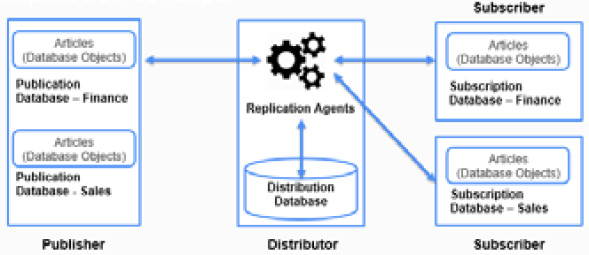Introduction to SQL Server Replication
Replication is a SQL Server feature that synchronizes data from a database (known as a publisher) to one or more databases (known as subscribers) on the same or different SQL Server instances.
Consider the following diagram:

Figure 1.5: Replication example
The preceding diagram depicts a typical implementation of replication. A replication has a number of components that work together to synchronize data between databases.
Let's look at these components in detail:
- Publisher: A publisher is a database that facilitates the data for replication.
- Publication: A publication is a set of objects and data to replicate. A publisher (database) can have one or more publications. For example, a database has two schemas, finance and sales. There's one publication that has objects and data for the finance schema and another publication that has objects and data for the sales schema.
- Articles: Articles are the database objects...



































































